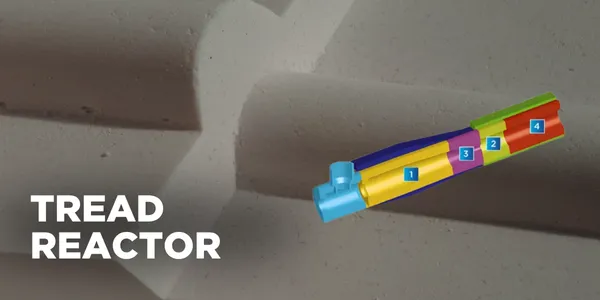Noir de Carbone
Depuis plus de trois décennies, Saint-Gobain Performance Ceramics & Refractories est l'un des principaux fournisseurs de revêtements réfractaires complets pour les réacteurs de noir de carbone.
Une gamme de solutions conçues sur mesure sont disponible pour les revêtements et faces chaudes de tous les types de réacteurs :
- Briques en chrome-alumine
- Briques en alumine de haute pureté en qualités AH199, AL100 et Alfrax101
- Mullfrax® 102HF résistant aux chocs thermiques et briques ALXNUMX
- Zirnorite® Briques en zircone pour la tenue aux températures élevées
- Pièces électro-fondues en Jargal M en fonte fondue pour une résistance maximale à l'érosion
- Produits de coulage isoalnts et denses pour les couches d'isolation
Solution par réacteurs
Cliquez sur Réacteurs pour en savoir plus :
Tailored Engineering for Reactor Optimization
Since carbon black reactors differ in geometry, temperature gradients, and gas flow they require refractory systems that perform reliably regardless of where they are installed within the reactor. We offer customized linings that align with each client’s operating profile, temperature range, and feedstock chemistry. With the application of advanced thermal modeling and shape design our refractory linings can enhance reactor temperature uniformity, support consistent process conditions, and extend maintenance intervals for improved operational reliability.
Reactor Applications
Our carbon black reactor solutions are designed for both tread and carcass reactors, where precise temperature control and material durability are essential:
- Tread reactors: Ziral™, Zirnorite®, and Jargal M can be used in combustion and choke zones in carbon black reactors to resist erosion and thermal shock, ensuring consistent temperature control and preserving mechanical strength for extended lining life.
- Carcass reactors: Mullfrax® 202 HF, AL102, and Alundum® AH199 provide thermal shock resistance and durability in reaction and quench zones, while backup layers made with Supcast® and RI34HR castables enhance insulation, reduce heat loss, and maintain structural stability throughout reactor operation.
Integrating these materials can help manufacturers achieve higher yield, lower energy consumption, and stable, efficient operation throughout carbon black processing.

